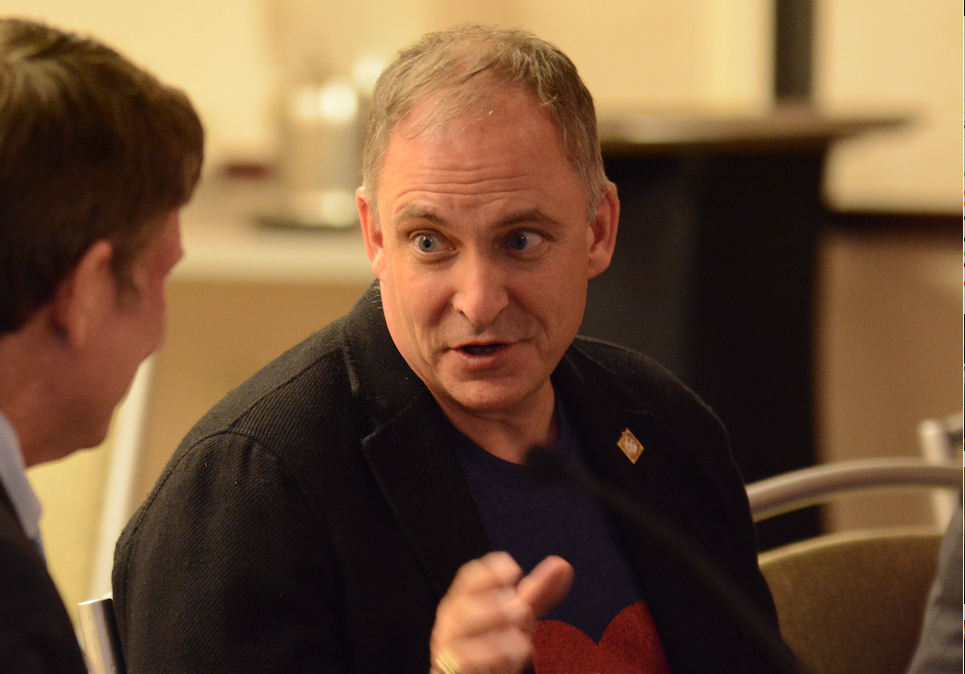
Photo: Screenshot-2019-04-05-at-10.31.24-1
Pandemic response offers lessons for the future of smart cities
22 February 2021
By: Bob Bennett, Chair of the Cities Today Institute; former Chief Innovation Officer, Kansas City MO; and current COVID-19 Vaccine Operations Director for the Unified Government of Wyandotte County and KCK
As smart city efforts get back underway, Bob Bennett examines COVID-19 initiatives in the US and reflects on what it really means to innovate.
From 2016 until late 2019, the ‘smart cities’ movement spurred aspirational discussions about what cities could be. Technology companies engaged mayors and city managers with the promise of silicon solutions to age-old problems. Communities considered modernizing processes and included digital infrastructure as a critical component of city planning. Intense, passionate debates among professionals from the public and private sectors saw agreement on the requirement for partnership and explored how to best prioritize smart city efforts.
Some people advocated for technology applications in communities at the pace of innovation, open to seeing the benefits that solutions could offer their citizens. Others chose to only use tech for specific problems and based on efficiency or return on investment (ROI).
Equity issues became central discussion points between the two groups, and most participants in the debate focused on the vision of a digitized, improved community even when they disagreed on the best way to do it.
In an era of polarization and anger in national politics, it was a refreshing and hopeful time to serve in local government.
Then came COVID-19.
While Washington politicized a virus (and, to its credit, initiated vaccine development), local governments re-prioritized their efforts, re-organized staff and re-focused on public health – a city effort which has been underfunded and under-supported in most cities for the previous ten years.
Public health pivot
Even before the pandemic, many mayors and city managers considered smart city projects to be pilots or initial efforts and cities were feeling their way forward. In Kansas City, Missouri, Mayor Quinton Lucas had abolished the city’s Innovation Department completely by the end of 2019 and reallocated projects associated with that team across multiple departments. His response was not unique to his community or to the public sector because while mayors were intent on making cities more livable , the technology partnerships they had entered highlighted the difficulty of balancing the interests and priorities of communities with the service optimization promised by technology vendors.
With the onset of COVID-19, many firms curtailed development of civic technology, concluded pilots or partnered activities early, or eliminated projects that had long-term plans and budget associated with them. As mayors harvested the innovation budget to fight the pandemic, the events that hosted smart city practitioners such as the Cities Today Institute Community Leadership Forums transitioned to Zoom, and the discussion focused on how cities were dealing with virus mitigation.
Other cities and firms used the virus as a pivot point to re-orient innovation teams against the virus as a way to improve government while simultaneously addressing the most dangerous emergent threat to the community.
On the west side of State Line Road, David Alvey, Mayor of the City of Kansas City, KS and the Mayor/CEO of the Unified Government of Wyandotte County/Kansas City; County Administrator Doug Bach; and Assistant County Administrator Alan Howze shifted significant county budget to the Public Health Department and re-tasked many staff members to support their colleagues in public health. As early as April 2020, city staff manned mobile COVID-19 testing sites to track the disease, which was ravaging the county disproportionately compared to the rest of the state of Kansas or the metro area.
When CARES Act money was made available to the county via the state in late April/May, the county leadership team committed over one third of the US$37 Million allocated to it to the health department for COVID mitigation. As the summer began to turn to fall, the county embraced a public-private partnership to establish a testing centre in a vacant Kmart in the heart of the county.
The strategy of establishing a permanent site indoors reflected the input received by county leaders from numerous community groups and an acceptance of the weather challenges that were likely to exist in the fall and winter in the Midwest. When vaccine development discussions transitioned from the theoretical to the real in November 2020, the county decided to invest in dedicated staff for the vaccine distribution effort and explored other locations in addition to the Kmart to establish mass vaccination sites that would successfully and quickly move vaccine from federally funded suppliers into the arms of Wyandotte Countians.
Within six weeks of the first vaccine delivery in late December, the county had successfully vaccinated 15,393 people – approximately 10 percent of the county’s population – despite extremely limited vaccine supplies from the state and federal government.
Lessons learned
Additional examples of programs working well include the strategy enacted by the State of West Virginia or the mass testing and distribution facility that the City of Los Angeles established quickly in Dodger Stadium. In all three of these cases, a few common threads illustrate how these efforts fuse the best elements of the smart city movement with a re-focus on public health as a local government priority. The critical components that set places like West Virginia, Wyandotte County or Los Angeles apart in this crisis are agile political leadership, risk acceptance behavior of the government and responsive staff members.
When political and administrative leaders in a community demonstrate the ability to identify a crisis and direct policy, good things happen.
West Virginia Governor Jim Justice decided early in the vaccine distribution planning to bypass hospitals as primary distribution sites and instead focus on community-centric vaccination sites managed by the National Guard. Mayor Alvey recognized the opportunity to utilize vacant properties in the heart of communities most in need of support during the pandemic and initiated action before the winds blew cold.
LA’s Mayor Eric Garcetti and Deputy Mayor for Budget and Innovation Jeanne Holm leveraged their civic tech projects to serve as a foundation for aid distribution via The Angeleno Card in partnership with Mastercard’s City Possible program, and testing/vaccination scheduling in partnership with the Dodgers.
All of these leaders rapidly assessed the nature of the COVID crisis in their communities and made a policy choice to mitigate that crisis early enough for the city staff to take action as soon as tools became available to fight back against the virus.
Similarly, these leaders embraced more risk than many of their peers. Gov. Justice’s decision to prioritize operations through a Joint Interagency Task Force instead of embracing hospitals like all the other states ensured that his efforts would be noteworthy regardless of the result.
Mayor Alvey’s initial investment of the bulk of the county’s CARES funding and subsequent funding above the augmented public health budget allocation (based on likely subsequent federal funding) could have resulted in decreased efficacy of policing, fire or public works requirements or economic development complaints from the business community. Los Angeles’ focus on the crisis response exposed the Mayor to intense media scrutiny. All three of these leadership groups accepted the risks and, so far, have been rewarded for being right.
Finally, all three of these teams and others like them all over the world communicated effectively with staff to ensure a shared vision and shared commitment to solving the pandemic crises first before going back to “business as usual”. The internal politics of local and state government can be complicated, but these teams used multiple tools to simplify the message and focus the staff on the part each department plays in making public health efforts part of the “community safety and growth” solution.
Public safety staff embrace the need to communicate COVID mitigation measures as intently as they enforce laws, transport injured people or fight fires. Public Works teams prioritize the parking lots of mass vaccination sites for snow removal operations. Transportation agencies look at ridership along routes that lead to vaccination sites and prioritize limited vehicle operators on those routes. When every member of the team perceives themselves as part of the COVID effort, then additional innovations percolate from the public servants, system operators and officers who deal first-hand with the worst impacts of the disease in our communities.
Smart city reboot
As vaccines continue to move from production facilities to distribution systems to community sites and patients’ arms, community leaders will need to take the time to examine how they responded and where improvements need to be made.
The systemic underfunding of public health resulted in complications to the vaccination effort in every community. The system struggled to keep up with the myriad of tasks assigned to it in normal times by 2018, and the demands of the COVID-19 pandemic caused many local governments to re-focus their priorities. Many governments that had been active in the smart city movement reallocated funding for projects like smart parking or lighting into health initiatives designed to fight the virus. Tech companies that failed to meet or adapt to the challenge of the crisis have been exposed, as have the entrepreneurs willing to share the risks underwritten by leaders like Mayors Alvey, Garcetti and Gov. Justice.
As local communities emerge from the pandemic and smart city projects regain momentum lost over the last 15 months, they must have a renewed focus on solving problems instead of testing proprietary solutions on wary local governments. This is even more urgent as cities face the economic and social shockwaves which will continue to unfurl from the crisis.
At a time of great tragedy, there is also hope that this approach can result in more passionate, informed discussions on governance and, ultimately, better cities and services for citizens.









